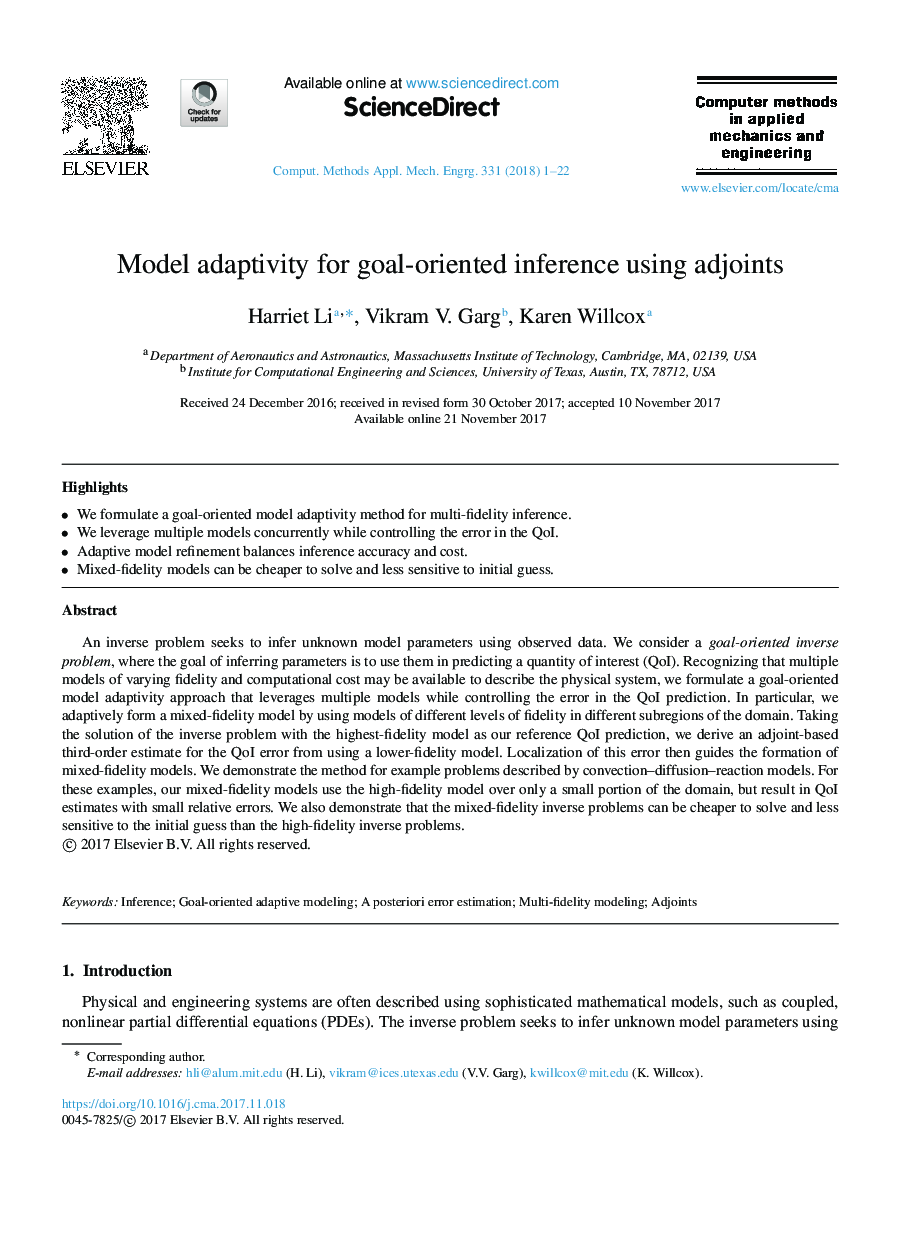| Article ID | Journal | Published Year | Pages | File Type |
|---|---|---|---|---|
| 6915630 | Computer Methods in Applied Mechanics and Engineering | 2018 | 22 Pages |
Abstract
An inverse problem seeks to infer unknown model parameters using observed data. We consider a goal-oriented inverse problem, where the goal of inferring parameters is to use them in predicting a quantity of interest (QoI). Recognizing that multiple models of varying fidelity and computational cost may be available to describe the physical system, we formulate a goal-oriented model adaptivity approach that leverages multiple models while controlling the error in the QoI prediction. In particular, we adaptively form a mixed-fidelity model by using models of different levels of fidelity in different subregions of the domain. Taking the solution of the inverse problem with the highest-fidelity model as our reference QoI prediction, we derive an adjoint-based third-order estimate for the QoI error from using a lower-fidelity model. Localization of this error then guides the formation of mixed-fidelity models. We demonstrate the method for example problems described by convection-diffusion-reaction models. For these examples, our mixed-fidelity models use the high-fidelity model over only a small portion of the domain, but result in QoI estimates with small relative errors. We also demonstrate that the mixed-fidelity inverse problems can be cheaper to solve and less sensitive to the initial guess than the high-fidelity inverse problems.
Related Topics
Physical Sciences and Engineering
Computer Science
Computer Science Applications
Authors
Harriet Li, Vikram V. Garg, Karen Willcox,
